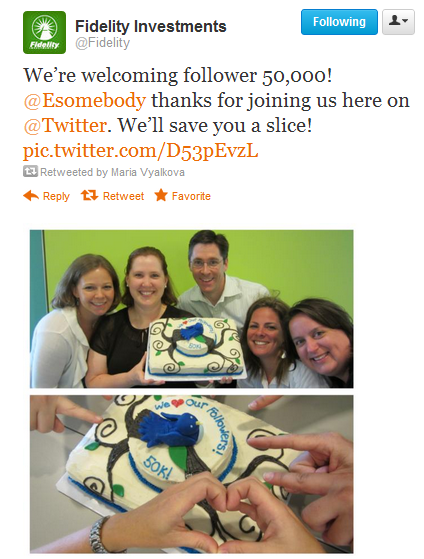Asset Managers Start To Say It With Pictures
/ Tweet“Hey, I read your ____.”
That would be the highest compliment that a family member could ever give me. After years of writing for various publications and companies, I’m still waiting to hear that a relative other than my sainted mother (she’d suffer through anything) read something that I wrote.
And yet the other day, I happened to mention something that I saw on an asset manager site to my recent college graduate niece. “Oh, I’d like to see that,” said Katy. And, the knife turned when she texted me later to remind me to send her the link.
Huh.
If you’re in the words business, as many asset management firms are, change is in the air. Signs are that the rest of the world, my family included, wants to see more than they want to read. And what they see, they are likelier to share.
From Web Pages To Stream
Time-starved people can more easily and quickly consume information conveyed visually. That seems to be the fact of the matter, and I like what photographer Trey Ratcliff said in an April This Week In Technology podcast.
“We’re moving from Web pages to a world of streams," Ratcliff said. "It’s easy to hang out on Instagram [the photo sharing app Facebook paid $1 billion for] and see the stuff come at you. The world we walk around in is 3D, and pictures make natural sense to our brains.” (And surely, that's part of Pinterest's appeal, too.)
Photographs can be especially powerful. Are you familiar with the Wall Street Journal’s photo of the day? This feature is now a can't-miss part of my daily routine on the WSJ’s iPad app. Photography is a relatively new competency for the Journal and the photos they're publishing are impactful in a way their column inches can't touch.
This business is on a similar track although coming from further behind. It's been in the last several years that communicators at mutual fund and exchange-traded fund (ETF) firms have started to introduce graphs and tables as a means of complementing seas of gray text. Now we are beginning to see the creation and distribution of largely visual communications that can stand on their own.
Here’s a random round-up of examples from some firms that are out there getting it done.
U.S. Global Investors' 'Interactive Favorites'
US Global Investors’ World Leaders quiz was what piqued my niece's interest, but it’s just one example of the firm’s commitment to visual, interactive content. Note that Interactive Favorites (explainers that include maps, quizzes, slideshows and timelines) merit their own mention on the site’s navigation. I wish—and I’ll bet that blogging advisors do, too—that all were shareable.

Franklin Templeton's Opportunities
Words are at a minimum on Franklin Templeton’s Discover A World of Opportunity series of pages, which follow a template that provides for a large storytelling graphic, a poll, a video and no more than a paragraph from the portfolio manager.
The investment in these assets is significant. Leveraging the effort may require more promotion than is typically given the incremental piece of content added to a site. For starters, I'd like to see this feature given its just due on the home page—the graphics themselves or slices of the graphics might attract more attention than just more words.

Putnam's Infographics
I like at least two things about the infographics that Putnam is publishing: They’re data-driven (maintenance should be straightforward) and able to be embedded. The width of my blog post is too narrow for this graphic and cuts it off, unfortunately. But, go ahead and move the salary slider—it works. Helpful on Putnam.com, this could add lots of value to an advisor's site.
JP Morgan's Guide to the Markets
JP Morgan’s all-graphs guide to the markets made its first appearance as a wildly popular limited distribution print piece. It’s online now, enhanced with audio files for advisors registered on the site.
This is a dense work and prized for that, no doubt. To date, JP Morgan has yet to market the individual graphs that make up the guide. BlackRock comes closest to that, with its Chart of the Week.

iShares On The Eurozone
For an ETF example, we go yet again to iShares. This piece still relies on a lot of copy, but kudos for the effort in presenting it in a more accessible way.

Fidelity's Birthday Cake, Vanguard's Fireworks
Finally, a few firms are using photos to connect in a more human way with communities online. When Fidelity hit its 20,000 Twitter follower milestone in October, it shared the spotlight with a follower and posted this photo to Facebook.

Update: Thirty minutes after I published this post, I saw that Fidelity's Twitter account @Fidelity posted a photo yesterday afternoon, this team including its team. Cute.

Not every photo shared needs to advance a specific agenda. As of this writing, almost 90 people on Facebook liked Vanguard’s recent work with construction paper and sparklers. My favorites of the Vanguard photos so far, though, have been their corny conversation heart (e.g., Buy N Hold Me) photos.

Who else is beginning to use pictures to tell their stories? Please comment below.



